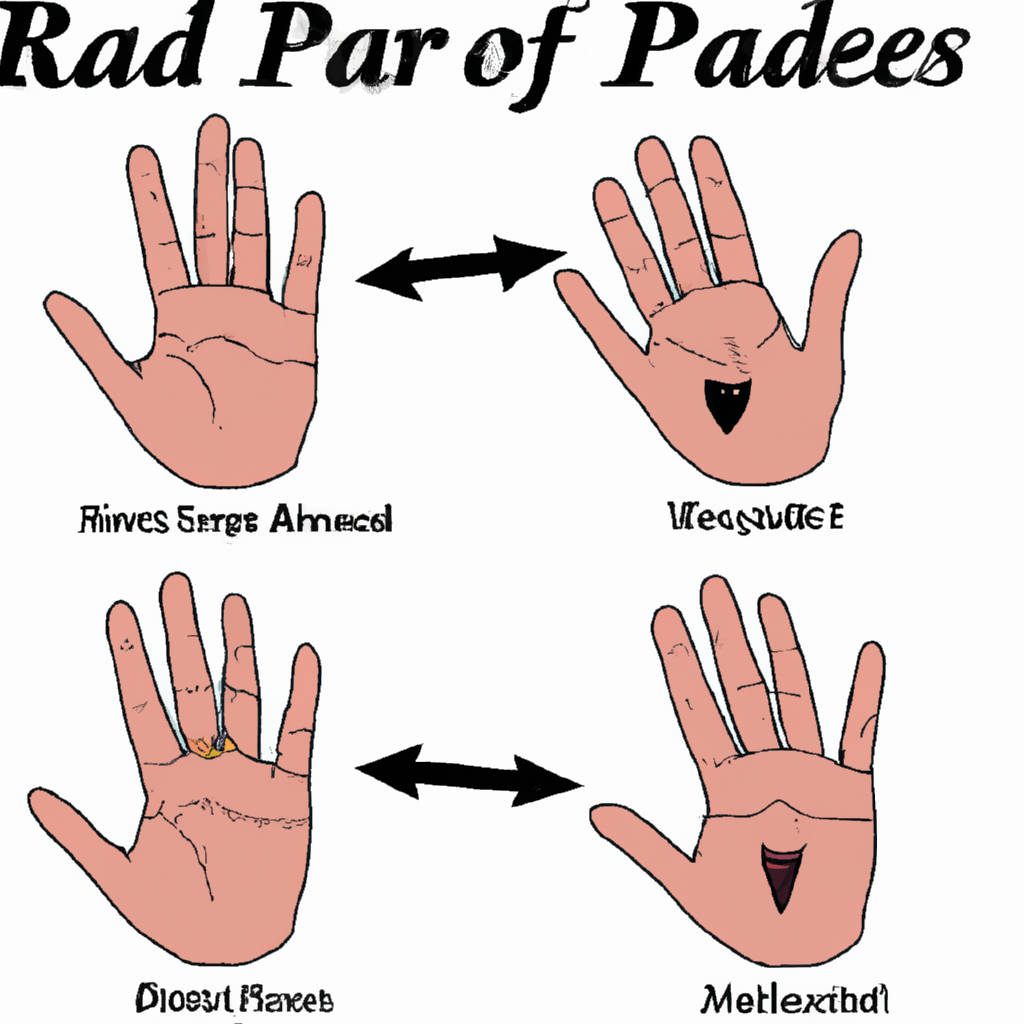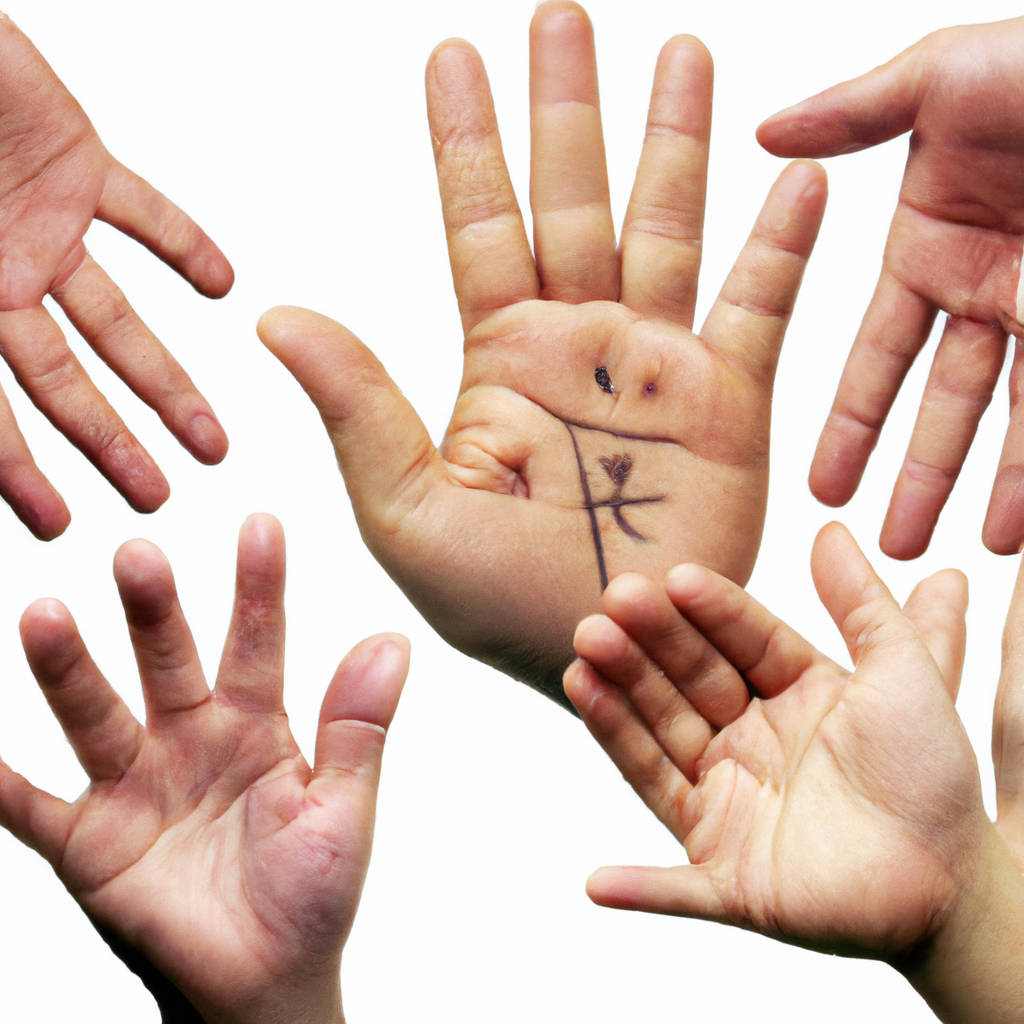Palm reading, also known as palmistry or chiromancy, is an ancient art of characterizing and predicting the future through the study of the palm. It is believed that certain lines and formations on the hand can reveal the major influences in an individual’s life.
Typically, the dominant hand is examined to determine potential life changes, while the non-dominant hand provides insight into past experiences or traits. The fundamental elements of palm reading include the analysis of hand shapes, which represent the four elements (earth, air, fire, water), and the lines of the hand, including the life, heart, and head lines.
Additional features such as mounts or bumps, markings, and hand textures also play an integral role in the interpretation. Palm reading is a broad and complex field, and its practice requires a deep understanding of various signs and symbols that can be found on the human hand. Although it is largely associated with fortune-telling, palm reading, at its core, is more about understanding one’s personality and inner traits rather than predicting the future.

Process
A process can be defined as a series of steps or actions taken to achieve a particular end. It is a systematic and organized approach to complete a specific task or reach a specific goal. It is a fundamental concept in various fields such as science, business, technology, and manufacturing. In science, for example, we can consider the process of photosynthesis, which involves a series of biochemical reactions that convert light energy into chemical energy in plants.
In business, a process can refer to the sequence of activities involved in the production or delivery of a service or product to customers. In technology, a process can be a set of instructions or procedures executed by a computer to accomplish a task. Similarly, in manufacturing, a process can be the steps taken to transform raw materials into a finished product. Each of these examples of process involves a sequence of actions or operations aimed at achieving a particular outcome.
Hence, understanding the process is crucial for efficiency and effectiveness in any field. It enables us to understand how things work, identify areas of improvement, and devise strategies to optimize performance and results. Moreover, a well-defined and well-managed process can enhance productivity, reduce errors, save time and resources, and contribute to overall success.
Palm Reading Introduction
Palm reading, also known as chiromancy or palmistry, is a practice that dates back thousands of years. It is a fascinating field that combines elements of psychology, history, and art to form a unique method of understanding and interpreting the human personality and potential future occurrences. Originating from various cultural backgrounds such as Indian,
Chinese, and Greek, it continues to captivate people’s interest across the globe. The premise of palm reading is based on examining the lines, shapes, and patterns on a person’s hand. Each line, whether it’s the life line, heart line, head line, or fate line, holds specific meanings and implications about one’s life. Furthermore, the size, shape, and color of the hands and fingers can provide additional insights into an individual’s character traits and potential life path.
It’s important to note that while palm reading may offer some insights into future events, it is not a definitive prediction of one’s destiny. Rather, it is a tool to gain more self-awareness and understanding of one’s innate potential. Many individuals turn to palm reading as a way to explore personal growth, make sense of past events or navigate future decisions. Despite skepticism and controversy surrounding its validity, palm reading continues to thrive as a practice due to its intriguing blend of mysticism and self-exploration.

Analyzing the Heart Line
Analyzing the heart line is a fascinating aspect of palmistry that deals with the various aspects of an individual’s love and emotional life. The heart line, one of the four major lines in palm reading, is located at the top of the palm and provides insight into the emotional state, romantic perspectives, affection and attitudes towards relationships. This line may start at various points, and its length and curvature also vary, each aspect offering a different interpretation about the individual’s emotional quotient.
Palmists study the depth, length, and curvature of this line, along with its relation to other lines to predict potential emotional disturbances, relationship struggles, and even cardiac health. For instance, if the heart line begins under the index finger, it indicates contentment with love life, while a line starting beneath the middle finger symbolizes a self-centered approach to love. A straight and short line implies less interest in romance, while a long, curvy line represents a person who freely expresses emotions and feelings.
Its depth is equally significant; a deep line suggests a stressed emotional life, while a faint one shows a lack of interest in relationships. Broken, chained, or cross lines may suggest emotional trauma or upheavals in love life. The direction of the end of the line is also analyzed; an ending in a fork indicates a pragmatic, balanced approach to relationships, while a line ending with a trident is considered a sign of good fortune in love matters.
In conclusion, analyzing the heart line is a complex, yet intriguing part of palmistry that provides a unique window into an individual’s emotional world. While it is interesting and enlightening, it is important to remember that these readings are subjective and should not be taken as definitive judgments of a person’s character or destiny.
Understanding the Head Line
The Head Line, in the realm of palmistry, holds significant insights regarding an individual’s intellectual tendencies, psychological attributes, and intuitive abilities. This line primarily represents the mind and its capabilities, often highlighting one’s mental strengths, potential weaknesses, and unique thinking patterns. It begins from the edge of the palm, between the thumb and index finger, extending across the palm horizontally. Its length, depth, branches, chains, islands, and other markings each hold distinctive interpretations.
For instance, a long, deep, and unbroken Head Line is indicative of a practical, methodical, and focused mind. It suggests a strong mental fortitude, logical thinking, and a realistic approach towards life. On the contrary, a short or shallow Head Line might imply that the person is impulsive, less complex in their thinking, or perhaps more physically oriented rather than cerebral. Breaks or islands in the Head Line could suggest mental strain or significant life changes, while branches might indicate diverse interests or potential distractions.
Moreover, the Head Line’s relation to the Heart Line and Life Line also contributes to its interpretation. If it is separate from the Life Line, it indicates an adventurous and independent spirit, while a joined starting point suggests a cautious nature. Similarly, if the Heart Line and the Head Line overlap, it implies that emotion and intellect are interwoven, influencing decisions and behaviors.
Every person’s Head Line is unique, much like a fingerprint, marking the distinctiveness of their cognitive realm. Therefore, understanding the Head Line forms an integral part of palmistry, providing insights into the intricate workings of an individual’s mind, their intellectual capabilities, and cognitive challenges. However, it’s important to remember that while the Head Line may offer some direction, it doesn’t dictate one’s destiny. Our choices, actions, and experiences ultimately shape our reality. The Head Line is merely a guide, a fascinating glimpse into our mental and psychological blueprint.

Assessing the Lifeline
Assessing the lifeline, often referred to as an evaluation of one’s life trajectory, is a complex and highly personal process. It involves a deep, introspective look into one’s past and present, as well good consideration of future potentials. Predominantly, it involves evaluating the quality of life, achievements, failures, relationships, and personal growth. One may assess their own lifeline or seek the help of a professional like a life coach or a therapist.
This process can be challenging but is often necessary for personal development. In assessing the lifeline, one can understand their patterns, make sense of the events that have shaped them, and identify areas for improvement. This process can also help in defining personal goals and setting a roadmap for achieving them.
Moreover, it is essential to note that assessing the lifeline is not a one-time process but rather, it should be done periodically. As we evolve, our perspectives change, our priorities shift, and our goals may be redefined. Constant evaluation ensures that one remains aligned with their values, ambitions, and desires.
The approach to assess the lifeline varies from person to person. Some may prefer a structured approach, using tools and frameworks to guide their assessment. Others may opt for a more free-form, introspective method, where they reflect deeply on their experiences. Regardless of the approach, it is crucial to be honest, open, and willing to accept the realities of one’s life.
In conclusion, assessing the lifeline is a crucial part of personal growth and development. It allows one to understand their past, make sense of their present, and plan for their future. While it can be a challenging process, its benefits are invaluable, leading to a more fulfilled, purposeful life.
Examining the Fate Line
Examining the Fate Line, or the Saturn Line as it is sometimes known, is a fascinating aspect of palmistry which is believed to be linked to a person’s destiny or life path. Elaborating upon this, the Fate Line is a vertical line that runs straight up the middle of the palm, from the base towards the middle finger. The presence, absence, or distinctness of this line is thought to provide insights into career progression, success, lifestyle changes, and even significant events or transformations in a person’s life.
In palm reading, a deep and unbroken Fate Line is often associated with a steady and focused life path, potentially indicating a stable career or a life largely unaffected by dramatic shifts. Conversely, a broken or wavering Fate Line may suggest a life filled with frequent changes, potentially in areas such as career or personal growth. Additionally, the starting point of the Fate Line is also believed to hold significance. For example, if it begins near the life line, it might indicate early life struggles, whereas a Fate Line beginning near the heart line may suggest a self-created destiny, often embarked upon later in life.
The study of the Fate Line, like all aspects of palmistry, requires a nuanced understanding and careful interpretation. It’s essential to remember that these readings are simply interpretations and not absolute determinations of one’s life trajectory. They should be viewed more as a tool for self-reflection and understanding, rather than a concrete prediction of the future. By examining the Fate Line, one can potentially gain better understanding of their life patterns, their motivations, and the various influential factors that have shaped their journey, ultimately providing a unique perspective on their personal narrative.

Hand and Finger Interpretations
Hand and finger interpretations are an intriguing aspect of human communication and culture. This form of non-verbal communication can convey a wide range of meanings, often varying significantly across different societies. For instance, in many Western cultures, a thumbs-up is a signal of approval or success, while in some Middle Eastern cultures, it’s considered a rude gesture. Similarly, the peace sign, represented by a raised index and middle finger, is a globally recognized symbol, but if the palm is facing inward in the United Kingdom, it can be deemed offensive.
Interpretations are not only confined to gestures but also extend to the physical characteristics of hands and fingers. In palmistry, the shape, size, and lines of the hands and fingers are believed to reveal personality traits and predict future events. The length of the fingers, especially in relation to each other, has been subject to various scientific studies. Some research suggests that the ratio of the index finger to the ring finger can indicate prenatal testosterone levels and may correlate with certain traits or tendencies.
In the world of art and photography, hands and fingers take on symbolic meanings. They can represent power, delicacy, creativity, or connection, depending on their depiction. In sign language, hands and fingers are the primary tools for communication, with each gesture and position corresponding to specific letters, words, or phrases.
However, it is critical to remember that interpretations can be subjective and context-dependent. What may be seen as a friendly gesture in one culture could be perceived as disrespectful in another. Similarly, scientific findings regarding finger ratios and traits are not definitive and must be understood within their limitations. In all, hand and finger interpretations provide fascinating insights into human behavior, culture, and biology, highlighting the depth and complexity of these often overlooked aspects of our bodies.
